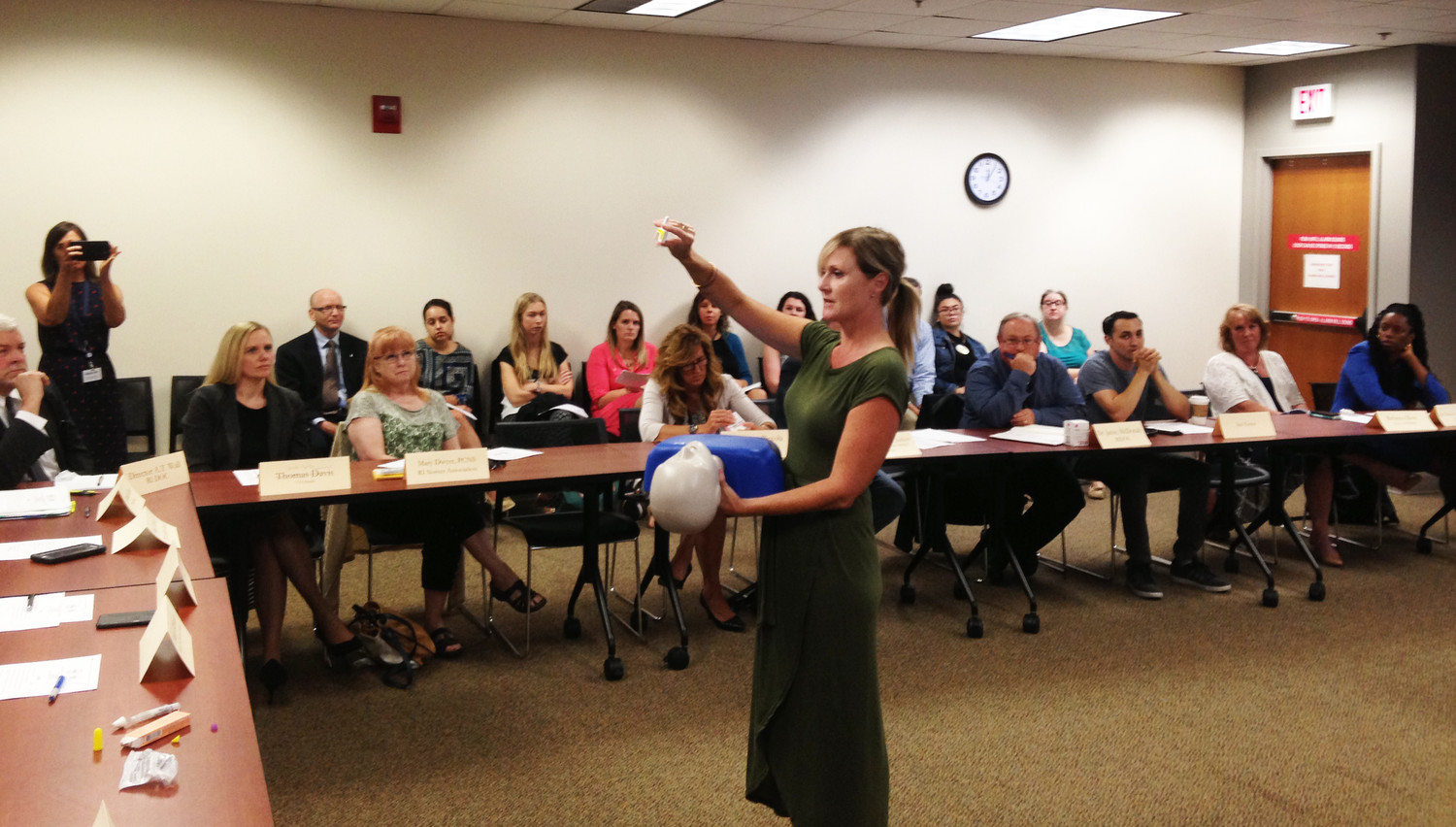Access, affordability of Narcan revealed to be a problem
Despite the new law requiring insurance companies to cover prescriptions for naloxone, the Governor’s Task Force members discovered there were big differences in co-pays, availability and access
PROVIDENCE – A funny thing happened on the way to the pharmacy for members of the Governor’s Task Force on Overdose Prevention and Intervention when they attempted to purchase naloxone kits to bring to the meeting on Sept. 13.
The exercise was part of an educational effort undertaken by the Task Force to better understand the barriers to dispensing naloxone in Rhode Island.
Despite a new law requiring health insurers to cover the purchase of naloxone, and a blanket prescription for naloxone issued by Dr. Josiah “Jody” Rich, Task Force members discovered huge gaps between the theory and the actual practice.
Barbara Goldner, whose son Brandon had died from a drug overdose, leading to changes in the way that emergency rooms respond to overdose patients, said she was first sold a naloxone kit without a syringe. In turn, Goldner said that she had to wait three days for her pharmacy to sell her naloxone in a nasal spray – and that it cost her $144 with her co-pay. She chose not to name the pharmacy in question.
Dr. Nicole Alexander-Scott, the director of the R.I. Department of Health, was able to purchase a naloxone kit, but was surprised when she had been charged $25 as a co-pay.
Rich, who described the experience by saying he “felt like a teenager going to buy some condoms,” said that when he want to a pharmacy, a Rite-Aid in North Kingstown, he was told that they didn’t have any naloxone kits. They did, however, call around to see if it was available elsewhere.
Other Task Force members said that they had somewhat better experiences: a 15-minute wait, a 5-7 minute wait, with co-pays ranging from $25 dollars to $45 dollars.
What emerged from the discussion was that there were significant differences in the way that health insurance companies charged co-pays for purchasing naloxone kits. There were also striking differences in the availability of naloxone kits at different pharmacies in Rhode Island. It was unclear how the Task Force was going to respond to the barriers to access and affordability identified.
A meeting devoted to naloxone
In a departure from its normal business routine, much of the Task Force meeting was devoted to discussing naloxone, sometimes referred to by its trade name of Narcan, with a number of presenters.
There was discussion of NaloxBoxes, which are public dispensing stations for naloxone, now with 32 such boxes at nine public locations in Rhode Island, including the R.I. Department of Health, with each box containing 2-4 doses of naloxone.
There was a presentation by Michelle McKenzie from Preventing Overdose and Naloxone Intervention, or PONI as well as a 20-minute, hands-on demonstration by Erin McDonough from the Rhode Island Medical Reserve Corps on how to use naloxone. Following the meeting, some 40 free kits of naloxone were distributed.
The Task Force’s Naloxone Workgroup said that it had increased the 2018 goal from 5,000 to 10,000 kits a year.
South County Health recognized
In other business, South County Health was recognized as a level three facility designated facility for its emergency room practices. William Sabina, the medical director of the Department of Emergency Medicine, told how South County is tracking data and sharing that data internally as well as with the R.I. Department of Health. “In 2016-2017,” Sabina said, “behavioral health is the number one health priority.”
Sabina also proudly shared a slide of the new banner at South County Health, showing that the hospital was a “Double 5-Star Quality & Patient Experience,” the only hospital in the Northeast to attain such recognition.
Stigma
The next meeting of the Task Force, which is scheduled for Oct. 11, will be focused on “stigma,” once again, a departure from the normal business meeting.






